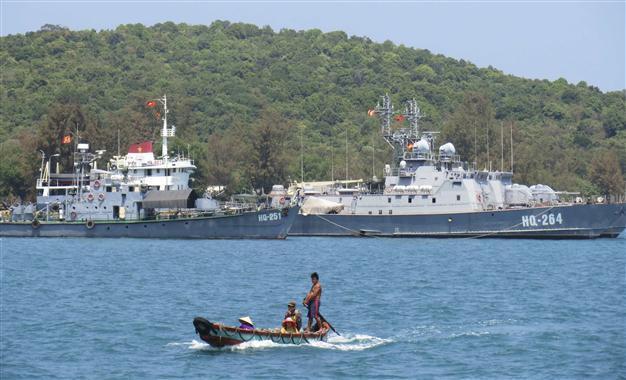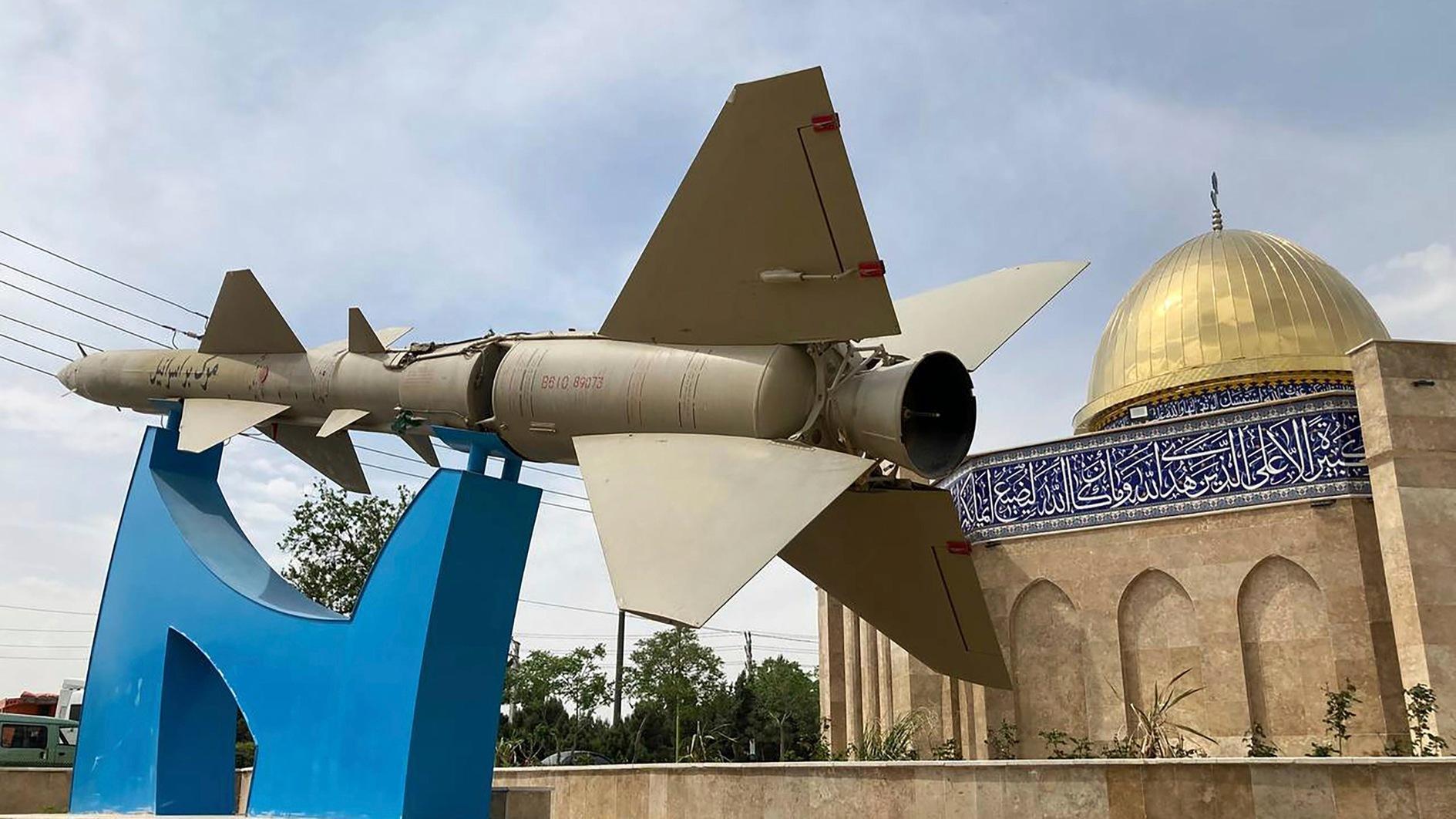Malaysian jetliner may have turned back before vanishing
KUALA LUMPUR - Reuters

Local residents ride a fishing boat past navy search and rescue ships before the ships depart for the search area for a missing Malaysia Airlines plane, at a port on Vietnam's Phu Quoc island March 9. REUTERS photo
A missing Malaysia Airlines jetliner may have turned back from its scheduled route before vanishing from radar screens, military officers said on March 9, deepening the mystery surrounding the fate of the plane and the 239 people aboard.More than 36 hours after the last contact with Flight MH370, officials said they were widening the search to cover vast swathes of sea around Malaysia and off Vietnam, and were investigating at least two passengers who may have been using false identity documents.
Despite dozens of military and civilians vessels and aircraft criss-crossing waters to the east and west of Malaysia, no wreckage has been found, although oil slicks have been reported in the sea south of Vietnam.
"What we have done is actually look into the recording on the radar that we have and we realised there is a possibility the aircraft did make a turnback," Rodzali Daud, the Royal Malaysian Air Force chief, told reporters at a news conference.
There were no reports of bad weather and no sign of why the Boeing 777-200ER disappeared about an hour after it took off from Kuala Lumpur bound for Beijing early on March 8.
European officials said it appeared two people on board were using stolen passports and Malaysian Transport Minister Hishamuddin Hussein said authorities were also checking the identities of two other passengers.
"All the four names are with me," said Hishamuddin, who is also defence minister. "I have indicated to our intelligence agencies and I have also spoken to international intelligence agencies for assistance."
He said help was also being sought from the U.S. Federal Bureau of Investigation (FBI). However, an attack was only one of the possibilities being investigated.
"We are looking at all possibilities," he said. "We cannot jump the gun. Our focus now is to find the plane."
Azharuddin Abdul Rahman, the head of the department of civil aviation, later told reporters only two passengers were being investigated and that authorities were checking CCTV footage of the two as they boarded the aircraft.
The search was being extended to the west coast of the Malay peninsula, in addition to a broad expanse of the sea between Malaysia and Vietnam, air force chief Rodzali said.
Malaysia Airlines said it was "fearing for the worst" and that it had sought assistance from an Atlanta-based disaster recovery management specialist.
The 11-year-old Boeing, powered by Rolls-Royce Trent engines, took off at 12:40 a.m. March 7 from Kuala Lumpur International Airport when it went missing without a distress call. Aboard were 227 passengers and 12 crew.
It last had contact with air traffic controllers 120 nautical miles off the east coast of the Malaysian town of Kota Bharu. Flight tracking website flightaware.com showed it flew northeast after takeoff, climbed to 10,670 meters and was still climbing when it vanished from tracking records.
Oil Spills
Vietnamese naval boats sent from the holiday island of Phu Quoc patrolled stretches of the Gulf of Thailand, scouring the area where an oil slick was spotted by patrol jets just before nightfall on March 8.
"Our two rescue boats have approached the two oil spills since 3 a.m. today but we haven't found any sign of the Malaysian plane yet. Other boats are ready to go to support if needed," Admiral Ngo Van Phat told Reuters.
Besides the Vietnamese vessels, Malaysia and neighbouring countries have deployed 22 aircraft and 40 ships in the search. China and the United States have sent ships to help, and Washington has also deployed a plane.
U.S. officials from Boeing, the National Transportation Safety Board (NTSB) and the Federal Aviation Administration were on the way to Asia to help in investigations, NTSB said in a statement.
The airline has said 14 nationalities were among the passengers, including at least 152 Chinese, 38 Malaysians, seven Indonesians, six Australians, five Indians, four French and three Americans.
There were no indications of sabotage nor claims of an attack. But the passenger manifest issued by the airline included the names of two Europeans - Austrian Christian Kozel and Italian Luigi Maraldi - who, according to their foreign ministries, were not on the plane. Both had apparently had their passports stolen in Thailand during the past two years.
U.S. and European security officials said that there was no proof of foul play and there could be other explanations for the use of stolen passports.
A Malaysian official with knowledge of the investigation said the passengers being checked had bought their tickets through China Southern Airlines, which was code-sharing the flight with Malaysia Airlines.
"We've seen the statements about stolen passports, but we cannot validate that," Hugh Dunleavy, director of commercial operations at Malaysia Airlines, told reporters in Beijing.
"As far as we're aware, every one of the people onboard that aircraft had a visa to go to China. Which means those passports were in the possession of the Chinese embassy before those visas were issued."
Boeing puzzled
Boeing said it was monitoring the situation but had no further comment.
Paul Hayes, director of safety at Flightglobal Ascend aviation consultancy, said the flight would normally have been at a routine stage, having reached initial cruise altitude.
"Such a sudden disappearance would suggest either that something is happening so quickly that there is no opportunity to put out a mayday, in which case a deliberate act is one possibility to consider, or that the crew is busy coping with what whatever has taken place," he told Reuters.
The disappearance of the plane is a chilling echo of an Air France flight that crashed into the South Atlantic on June 1, 2009, killing all 228 people on board. It vanished for hours and wreckage was found only two days later.
John Goglia, a former board member of the NTSB, the U.S. agency that investigates plane crashes, said the lack of a distress call suggested that the plane either experienced an explosive decompression or was destroyed by an explosive device.
"It had to be quick because there was no communication," Goglia said. He said the false identities of the two passengers was "a big red flag".
If there were passengers on board with stolen passports, it was not clear how they passed through security checks.
















